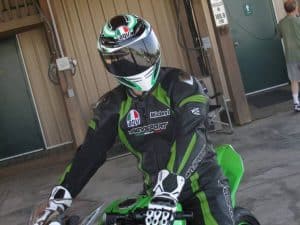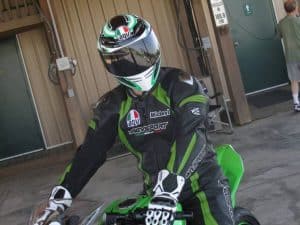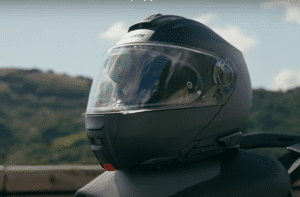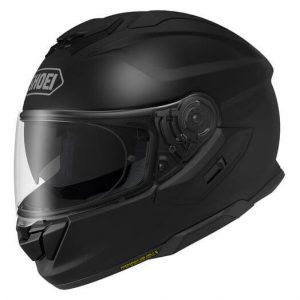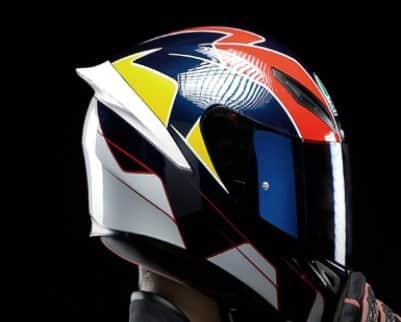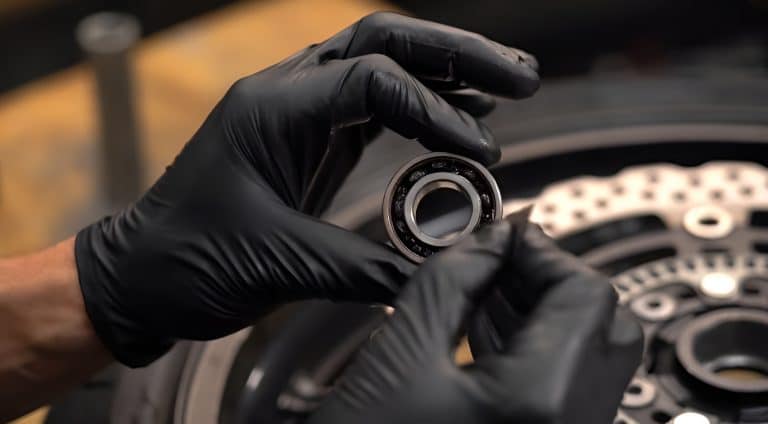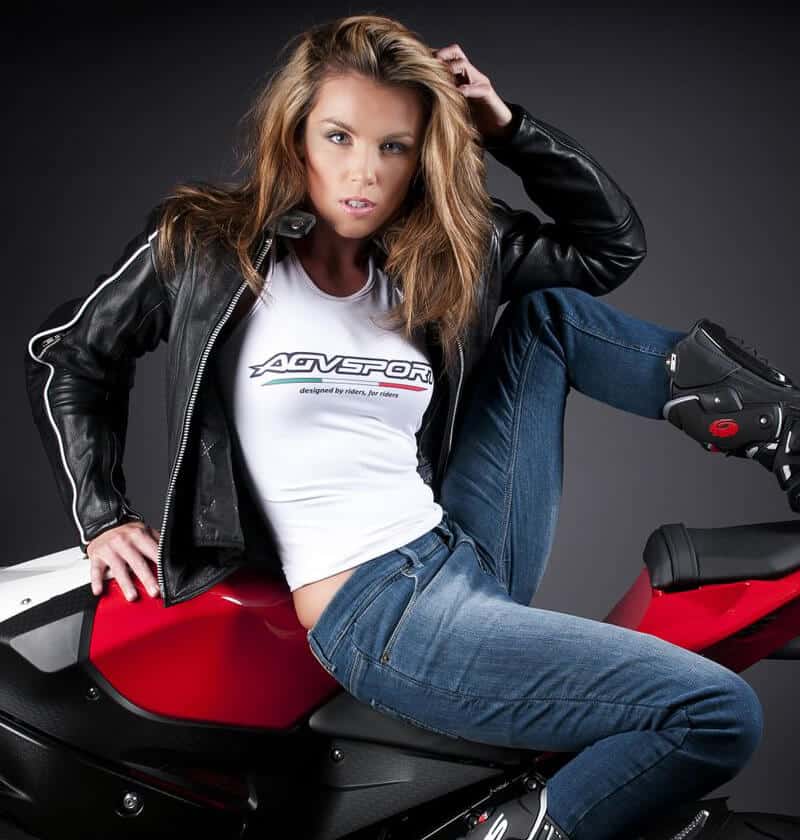Motorcycles have a sequential gearbox, meaning you have to drop down a gear or two to make the most out of your bike’s powerband at higher RPMs without the ride becoming jerky or uncomfortable. Simply going fast and taking excessive risks isn’t what defines a skilled rider. True proficiency lies in quick reactions and controlled movements, with steady hands and smooth coordination of all limbs to maintain balance and precision.
Downshifting properly helps maintain stability, reduces wear and tear on the bike, and can even make your riding more fun. But it’s not just about shifting gears; rev matching is a critical part of the downshifting process that improves control and bike longevity. At its core, motorcycle downshifting is the process of shifting to a lower gear, typically to slow the bike or prepare for a corner. But to do this smoothly and safely, you need to match the engine speed (RPM) to the speed of the lower gear, which is where rev matching comes into play.
Different Types of Motorcycle Downshifting
There are several ways to downshift on a motorcycle, and each has its advantages depending on the situation and your skill level. Below, I’ll cover the three most common techniques:
1. Clutchless Shifting
Clutchless shifting involves shifting without pulling in the clutch. This can be done by applying pressure to the gear selector to drop into a lower gear, all while the clutch remains engaged. While this method can work even on bikes without a slipper clutch, it’s generally safer when the bike is equipped with one. However, it’s often more suitable for upshifts than downshifts, as improper execution can result in the rear wheel locking.
When to use clutchless shifting:
- When shifting up gears in a smooth, controlled manner at high RPMs.
- On bikes with slipper clutches that make the downshift safer.
-
When you need to shift quickly and don’t have time to disengage the clutch.
2. Standard Shifting with the Clutch
The most traditional form of downshifting involves pulling in the clutch, selecting the next gear, and then releasing the clutch smoothly. It’s an easy method to learn and is the most common way riders shift gears, but it’s not always the smoothest when high precision is required, especially in demanding riding situations like racing or aggressive cornering.
When to use standard shifting:
- For beginners or those just learning to ride.
-
When you’re not in a rush to downshift or need a simple, effective way to change gears.
3. Rev Matched Downshifting
Rev matched downshifting is a more advanced technique where you use engine speed to smoothly transition into a lower gear. This involves briefly blipping the throttle to increase engine RPMs before releasing the clutch to engage the new gear. When done properly, this creates a seamless shift with no jerking or loss of control. It’s particularly useful when cornering or slowing down for a stop.
When to use rev matched downshifting:
- When cornering and you need precise control over your bike.
- When you’re braking hard and need to quickly reduce speed without causing instability.
- In racing or advanced riding situations where smooth transitions are essential.
While new riders may find shifting down to be a straightforward task, experienced riders know there’s much more to it. From smoother transitions to improved cornering techniques, mastering downshifting and rev matching can transform your riding experience.
What Is Motorcycle Downshifting With Rev Matching?
Rev matching is the action of intentionally increasing engine speed to match the speed of the lower gear when downshifting to create a smooth transition. It is that cool thing pro riders do that is fun and makes the bikes loud when slowing into a corner or at a stop. Matching revs goes hand in hand with downshifting because it is how a motorcycle was built to function.
When downshifting without rev matching, you might experience a jerky motion or “clunking” as the engine speed doesn’t match the speed of the gear you’re trying to engage. Rev matching eliminates this issue by briefly increasing engine RPMs to match the lower gear, creating a seamless and smooth transition. This not only results in a more comfortable ride but also extends the lifespan of your bike’s components, particularly the clutch and transmission.
Why Is Rev Matching Important?
Rev matching isn’t just a flashy trick, it serves several key functions:
- Smoother Downshifts: Without rev matching, you might feel a jolt or experience sudden deceleration as the engine speed catches up with the lower gear. Rev matching ensures that your bike’s engine speed is aligned with the new gear, providing a smoother transition.
- Improved Control: When you’re cornering or stopping, smooth downshifting with rev matching helps keep the bike stable and responsive. It allows you to use engine braking effectively, which provides more control compared to relying solely on the brake.
- Less Wear and Tear: Proper rev matching reduces the stress placed on the transmission, clutch, and drivetrain, leading to longer bike life and fewer costly repairs.
- Better Cornering: When rev matching, you downshift to a gear that allows you to accelerate out of the corner with more power. This helps you maintain a better line and exit the corner more efficiently.
- Increased Rider Safety: Proper downshifting and rev matching can make your braking and cornering smoother, improving your ability to react quickly and avoid potential hazards.
Two Motorcycle Downshift With Rev Matching Techniques for On and Off Track Riding
Start by learning how to downshift like pros with these two techniques;
- Throttle blipping
- Clutch slipping
For fast riders, rushing corner entry or getting back on throttle too soon or crossing the centerline or right edge (going wide) spells disaster. Collisions, high sides, and low sides, to name but a few devils, lie in wait to ambush at every corner. Your only weapon against them is composure, which comes from diligent practice.
1. Rev Matching by Throttle Blipping Technique: Clutch In, Down a Gear, Blip & Clutch Out
Throttle blipping is one of the most commonly used methods for rev matching. In this technique, you quickly roll the throttle open to raise the engine RPM as you downshift, so that the engine speed matches the lower gear.
Steps:
- Cover and Preload Your Levers: Practice covering the front brake and clutch with your index and middle fingers. Keep your ring and pinky fingers free to grip the throttle.
- Roll Off the Throttle: Pull in the clutch while rolling off the throttle, maintaining steady brake pressure.
- Downshift: As you pull in the clutch, shift down to the next gear.
- Blip the Throttle: Briefly roll the throttle open with your right palm or pinky to raise engine RPMs to match the speed of the new gear.
- Release the Clutch: Slowly let out the clutch to engage the lower gear smoothly while maintaining brake pressure.
Pro Tip: The size of the throttle blip is relative to your bike’s engine. Typically, you’ll need to blip between 1,000 and 2,000 RPM higher than the current engine speed.
Hurdles to Overcome When Mastering the Blipping Technique
- Doing the Routine Sequentially: The steps are not one after the other, but rather overlapping within a short time so that you will want to do them as a single action with all your limbs. Breaking it down and overthinking are a common mistake that makes it more difficult to master this technique.
- Revving Too High: Remember, you are only trying to compensate for how much your engine has slowed down since you came off throttle. There is no fixed number, but if you are doing it fast enough, you shouldn’t have to add more than 2000 RPM as earlier noted.
- Clenching on the Brakes: This is not a place where you want to use excessive force on the brake lever; hence, the two-finger technique. The pressure applied to the brake lever should be uniform so that you don’t rev and increase the brake to stop at the same time, which is conflicting information to your bike’s controls. Again, master the engagement point on your brake lever for proper trail braking into a corner. They go hand in hand with downshifting with matched revs!
2. Rev Matching by Clutch Slipping Method: Clutch In, Shift Down, Find Bite Point & Clutch Out Smoothly
Clutch slipping is another method of rev matching that involves releasing the clutch slowly after downshifting, allowing the engine to catch up with the drivetrain. This method doesn’t require a slipper clutch but is still effective for smooth downshifts. It’s much easier than blipping but comes at a cost of clutch wearing out faster.
In this method, there is no use of the blip. Instead, slow clutch coupling ensures that the engine catches up with the clutch slowly; and therefore, it couples the engine rotor to drivetrain smoothly. To use the slipping method, do:
Steps:
- Pull in the Clutch: Disengage the clutch to begin the downshift.
- Downshift: Shift into the lower gear.
- Find the Bite Point: Slowly release the clutch to the engagement point, allowing the engine to rev up slightly.
- Fully Release the Clutch: Once the engine speed matches, let the clutch out completely to engage the lower gear smoothly.
Pro Tip: The trick to master this method is being fast but accurate. You have to find that engagement with laser precision and be able to repeat it without letting the engine speed drop too far or fluffing the change, which will cause instability.
Hurdles You May Encounter When Learning Clutch Slipping
- Rapid Clutch Out: This will be very unpleasant and potentially lethal if you are riding at higher speeds. I would recommend practicing below 35 mph and on an empty parking lot (off the streets) to avoid locking up the rear.
- Impatience: Try to learn this in one session and do it swiftly, and you will end up on the pavement. False neutrals, wagging tails and general discomfort are guaranteed punishment for those who lack patience.
Which Downshift Rev Matching Technique Is Better? Slipping or Blipping? What About Slipper Clutches?
While the slipping technique makes life easier, it eats away your clutch plates sooner. Blipping is arguably more fun as it produces the awesome revving sound while giving you better road presence and clutch longevity. On the other hand, slipper clutches eliminate the guesswork and make life a whole lot easier for all riders. They may be less engaging for rider experience but certainly cut down on the drama.
Whether your motorcycle comes with a slipper clutch or not, slipping and blipping are still fun ways to enjoy your ride. And no, downshift with rev matching does not harm your bike in any way.
Common Mistakes to Avoid When Rev Matching
Mastering rev matching can take time, and many riders make a few mistakes along the way. Here are some of the most common errors and how to avoid them:
- Revving Too High: When blipping the throttle, some riders over-rev the engine. This can cause instability or put unnecessary strain on the engine. Keep your revs in the 1,000 to 2,000 RPM range to maintain smoothness.
- Not Applying Enough Throttle: On the flip side, not revving enough can cause the bike to jerk as the engine speed doesn’t match the lower gear. Practice finding the right amount of throttle.
- Riding Too Fast for the Technique: Don’t attempt rev matching at high speeds until you’re comfortable with the technique. Start practicing at lower speeds in a controlled environment like a parking lot.
- Clutching Too Aggressively: When clutch slipping, releasing the clutch too quickly can cause the rear wheel to lock or result in a jerky downshift. Practice controlling the engagement point to achieve smooth shifts.
Why Downshift While Braking? Isn’t it Redundant?
Three situations call for a downshift; to slow down, to get lower gears for higher torque to climb hills faster, or to attain better acceleration while overtaking. Except for when slowing down, braking is counterproductive. Whichever the case may be, rev matching ensures engine braking does not occur inadvertently.
When slowing down, you want to add engine braking to make a quicker and smoother stop while getting ready to take off again. It is a safe riding habit that will prepare you to escape being hit by a TikTok driver.
Preloading your brake lever, a feature of both blipping and slipping downshifts, means finding the point of engagement and keeping it there without actually applying the brakes; usually just before the lever clicks and the rear brake light is turned on. It forces braking to be progressive and safer than jerky inputs of panicked braking.
Final Thoughts
It’s really up to you what you want to do with your bike, but there are obvious benefits to learning how to rev match. And this goes for all manual transmissions.
When done properly, downshifting with rev matching will actually improve the longevity of your motorcycle. If downshifts are not precise (engine speed mismatched with clutch speed), they cause an unpleasant jerking motion, which destabilizes the bike and could, worst case scenario, lock the rear tire.
It takes a lot of practice to master rev matching, but again, what about riding a motorcycle is easy? Whether it’s for the fun revs or you are thinking about proficient cornering, rev matching will get you out of sticky situations and add a gist of fun to your everyday riding experience.
FAQs — I Have The Answers!
Q: What’s the Difference Between Clutchless Shifting and Rev Matching?
Clutchless shifting involves changing gears without using the clutch, typically at higher RPMs. While this method is effective for upshifts, it can be risky for downshifts if not executed properly. In contrast, rev matching involves increasing engine speed to align with the lower gear’s speed during a downshift, ensuring a smoother transition. The technique is especially useful for maintaining stability and control during cornering or braking, making it an essential skill for smoother, safer riding
Q: Does Rev Matching Harm the Motorcycle?
No, when done correctly, rev matching doesn’t harm your bike. It actually reduces wear on the clutch and transmission by preventing sudden, jerky shifts.
Q: Can I Rev Match Without a Slipper Clutch?
Yes, you can rev match without a slipper clutch. While a slipper clutch makes the process easier and safer, it’s still possible to master rev matching on bikes that don’t have one.
Q: Is Rev Matching Necessary for Beginners?
While rev matching is not essential for beginners, learning it basics early on can help improve your riding skills and reduce the learning curve later on.
Q: What Are the Benefits of Rev Matching for Cornering?
Rev matching for cornering ensures you’re in the right gear when entering a corner, which allows you to accelerate more effectively out of the corner. It also prevents the bike from jerking, giving you better control as you navigate turns.
Q: How Can I Practice Rev Matching?
Start practicing rev matching in a safe environment, like a parking lot, at lower speeds. Focus on smooth throttle blipping and clutch control. As you become more confident, try applying the technique at higher speeds and in different riding conditions.
Information for this article was partially sourced and researched from the following authoritative government, educational, corporate, and non-profit organizations:
M/A

